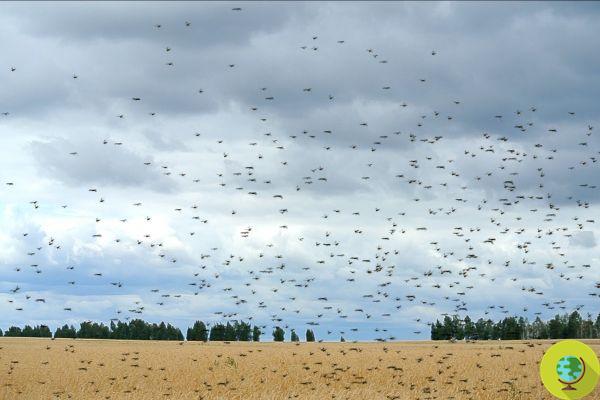
Locusts threaten Somalia and South East Africa due to climate change. For the UN, we must immediately take action
He is about to end up run over, his mother saves himLe locusts threaten the eastern part of Africa. The United Nations warns: in a few weeks some countries could come to terms with the most devastating invasion of the last 70 years. A real scourge against which even the Fao.
The increasingly massive presence of these insects in the desert in the Horn of Africa could cause a humanitarian crisis, according to the Food and Agriculture Organization.
The one that could hit Kenya, Ethiopia and Somalia is the worst in decades and has already destroyed hundreds of thousands of hectares of crops.
At first glance, desert locusts in northern Somalia look little creepy. Small and wingless, young locusts populate south-east Africa but soon threaten over 10 million people across the region, causing a severe food crisis.
Insects are spreading to one of the most inaccessible places on the planet. Much of Somalia, south of the semi-autonomous region of Puntland, is threatened or held by the al-Shabab extremist group linked to al-Qaeda. This makes aerial spraying of locusts difficult or impossible, which is the only effective control.
Somalia has already declared a national emergency as it could "be the most devastating locust plague ever if we don't tackle the problem faster than we are doing right now," said United Nations humanitarian chief Mark Lowcock.
And the fault lies with the changing climate and unusually heavy rain, aided by a powerful cyclone off Somalia in December. The locusts were carried by storm winds from the Arabian Peninsula and elsewhere, and are now feeding on Somalia's fresh greenery.
Furthermore, new rains are expected in the region in the coming weeks, making the situation even more serious. At this rate, if left unchecked, the number of locusts could grow up to 500 times by June.
A plague that could become even more dangerous in the future: climate change increases the presence of cyclones from the Indian Ocean off East Africa and consequently the likelihood of further outbreaks of locusts.
According to the FAO, they are jeopardizing food security and livelihoods in the Caucasus and Central Asia as well as in adjacent areas of northern Afghanistan and the southern Russian Federation. In the Caucasus alone, 25 million hectares of cultivated areas are threatened and at least 20 million people are at risk.
Locusts have a high ability to multiply, form groups, migrate over relatively large distances (they can fly up to 150 km per day) and in the presence of heavy rains they reproduce rapidly and increase by about 20 times in three months, to the detriment of crops and the food supply of the population.
And this is what could happen in Somalia if we do not soon run for cover.
Reference sources: UN, FAO, NBC
READ also:
Giant swarms of grasshoppers invade Las Vegas - even visible on weather radars
Nightmare grasshoppers in Sardinia: millions of specimens are devastating the fields
Let's get ready: the food of our fields will be invaded by an army of all-eating insects


























